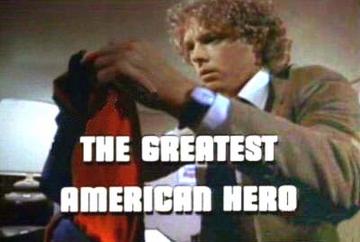
The Greatest American Hero exploded onto the scene as an ABC midseason replacement on Wednesday, March 18, 1981. The brainchild of accomplished television producer Stephen J. Cannell (who would later bring us The A-Team), The Greatest American Hero immediately captivated critics and audiences alike, garnering rave reviews for its hip, smart style; its brilliant blending of comedy, action, and drama; and its inventive use of rock and roll.
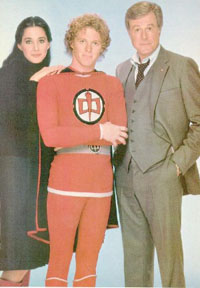
Heavily promoted by ABC, The Greatest American Hero enjoyed a stellar opening, and held its own as a ratings champion throughout its abbreviated first season. ABC was thrilled. Unfortunately, that particular network … which isn’t known for its intelligent handling of science fiction properties… subsequently bungled the show, leading to its final cancellation just two years later on March 3, 1983.
In the pilot episode, liberal schoolteacher Ralph Hinkley (William Katt) becomes stranded in the desert where he encounters an alien spacecraft whose unseen occupants display a penchant for communicating through the manipulation of old-style car radios. The aliens, thereafter referred to as “the little green guys,” present Ralph with a red superhero outfit (complete with cape) that gives Ralph a full spectrum of super-powers, ranging from augmented strength and the power of flight, to invisibility and holographic visions of distant events.

Of course, the suit will only work on Ralph, and, of course, Ralph loses the suit’s instruction manual before he can even get the alien garment home. Much of the series’ early charm was derived from Ralph’s efforts to figure out how to make the suit work. In one particularly memorable scene, a young boy instructs Ralph in the fine art of superhero takeoffs when Ralph decides to try to fly for the very first time.
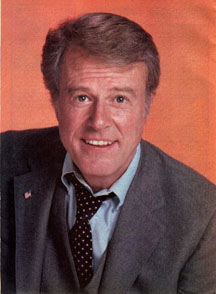
The aliens pair Ralph with a conservative, cantankerous, flag-waving FBI agent named Bill Maxwell (Robert Culp, of I Spy fame), thereby creating one of the most memorable on-screen duos of the entire 80’s decade. Ralph’s “Save-The-Whales” agenda for the suit constantly clashed with Maxwell’s “commie-busting” scenarios, providing the writers with a constant wellspring of inspiration for the frequently delicious banter that became a hallmark of the show.
Rounding out the show’s triumvirate of stars was Ralph’s fiancé, Pam Davidson (Connie Sellecca), a successful lawyer who shared Ralph’s liberal bent, and who frequently complained about Bill Maxwell’s attempts to diminish her role in the trio to that of “third-string backup.”
The chemistry between the three leads was dead-on, helping the show achieve its early, almost magical balance, between comedy, action, and drama. Season one, in particular, offered some of the series’ most compelling human subplots, including Ralph’s custody battle for his young son, Kevin. Unfortunately, subsequent seasons offered less consistency with these types of human stories… and Kevin vanished from memory almost as quickly as Ritchie’s older brother, Chuck, on Happy Days.
Despite the rabid success of GAH’s first season, the show faced its first major hurdle before the pilot ever hit the airwaves. In an act of extreme pettiness, DC Comics filed suit against ABC, claiming The Greatest American Hero infringed on the copyright of its Superman character. The comics giant attempted to gain an injunction that would have prevented the pilot from airing. A judge ruled in GAH’s favor, but DC persisted in its legal efforts to bring down the show. DC eventually lost the case, but the lawsuit was enough to scare potential licensees away from the show, which is why next to no GAH merchandise was ever produced.
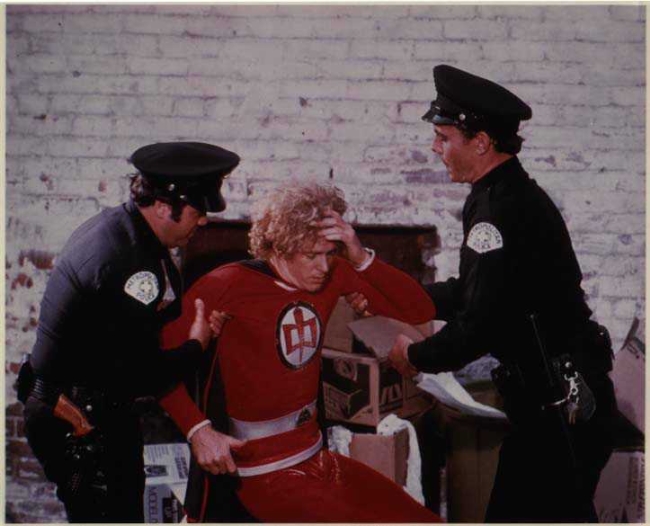
Also during the first season, in one of the most celebrated examples of network overreaction, ABC changed Ralph’s last name from “Hinkley” to “Hanley” in the wake of the 1981 shooting of former President Ronald Reagan by would-be assassin John Warnock Hinckley, Jr. Ralph’s students began referring to their teacher as “Mr. H” in the latter episodes of the first season, but the suits at ABC, in a rare act of wisdom, quietly changed our hero’s name back to Hinkley by the start of the second season.
The eagerly anticipated second season of The Greatest American Hero got off to a late, but strong start on November 28, 1981, with a particularly charming episode that gave Ralph his 15-minutes of fame as a major league baseball star. Season two featured some exceptionally strong writing, highlighted by two separate episodes in which the “little green guys” returned to Earth. Unfortunately, Connie Sellecca was pregnant during the filming of the second season, which either minimized… or completely eliminated… her role in a number of episodes, leading to a slight faltering of the show’s proven formula. To make matters worse, ABC pre-empted GAH more than a few times during the second season, leading to an erosion of audience loyalty. By the time the last episode of the second season aired on April 28, 1982, ratings had slipped to the point where the show’s future was in jeopardy.
The beginning of the third season marked the beginning of the end for The Greatest American Hero. ABC brought the show back, but moved it from its familiar Wednesday night time slot to Friday night, where it went head-to-head with NBC’s new mega-hit Knight Rider. This is especially tragic, given the strength of the powerhouse October 29, 1982 season opener, which not only took us inside the alien ship for the first time, but also brought us face-to-face with an actual “little green guy” and gave us a glimpse at the “green guy’s” home planet.
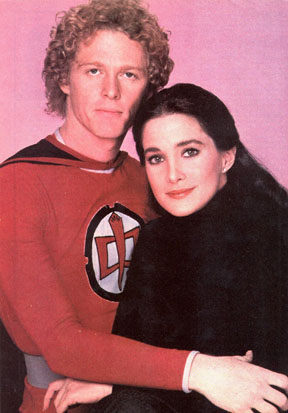
The episode provided an avalanche of backstory, as viewers learned… along with Ralph and Bill… that the “green guy’s” planet was devastated by war, greed, hatred, and avarice… and that’s why they have given Ralph the suit… to make sure that Earth is never allowed to suffer the same fate. They even gave Ralph a new instruction book before re-depositing him and Bill back in the desert. Of course, Ralph lost the new instruction book within minutes. But Knight Rider was wiping the floor with GAH, and after only 4 third-season episodes, ABC yanked the show from its lineup. GAH’s last gasp for air began when ABC brought the show back in yet another new time slot on Thursday, January 6, 1983, in a special episode that finally saw the Ralph and Pam take their wedding vows.
It wasn’t enough.
Five episodes later, on March 3, 1983, the GAH death rattle was heard as ABC pulled it from its schedule for the last time. With four unaired episodes left in the can, the network announced that the show would return.
It never did.
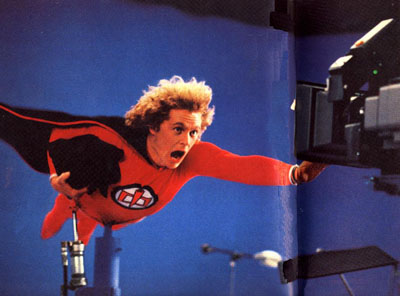
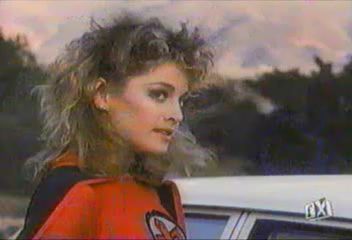
Three years later, however, the sun almost rose again on GAH. According to internet lore, in 1986 then-NBC President Brandon Tartikoff was attending a ceremony at which Stephen J. Cannell was being honored for his contributions to television. During a montage of clips from selected Cannell productions, Tartikoff supposedly stated that “ABC made a big mistake in canceling that series.” Cannell and Tartikoff started talking, and a new pilot was ordered.
But Connie Sellecca had already gone on to post-GAH success in Hotel, and Katt was simply uninterested in doing the show again. The decision was made to give the suit to someone else, and The Greatest American Heroine was born. Both Katt and Sellecca reprised their roles in the first half of the pilot, while Culp and would-be series star Mary Ellen Stuart carried the last half.
The story was as follows: in the process of saving the life of a woman who is plummeting to her death, Ralph and the supersuit are caught on camera. Ralph, now exposed to the world, becomes an instant celebrity as the media, government, and general public come forward to thank him for his years of service. Ralph’s ego proceeds to swell to the point where he hires an agent to handle all of his publicity (and this was years before Mystery Men’s Captain Amazing). The “little green guys” are unenthusiastic regarding this turn of events, and insist that Ralph bequeath the suit to a more worthy hero. Ralph chooses fellow “Save-The-Whales” enthusiast Holly Hathaway (Stuart), much to the chagrin of Bill Maxwell, who now has to teach her how to use the suit… since the “green guys” won’t give up a third copy of the instruction book!
But Tartikoff felt that the chemistry between Stuart and Culp was nowhere near as strong as the Culp/Katt/Sellecca dynamic, and that the reimagining lacked the charm of the original. The show never went to series, and the pilot, estimated to have cost one million dollars, never aired on NBC. The Greatest American Heroine pilot was tossed in as part of the syndication package with the original 44 GAH episodes, and has popped up only once or twice on cable. The pilot is currently considered a rare collectible.
GAH was largely forgotten in the 1990’s, but in 2000, rumblings were heard in the Disney camp about a big-screen adaptation of the series. Precious few details have been made available about the project. In 2002, it was announced that Paul Hernandez had been named to pen the script, replacing the previously announced writing team of Abby Kohn and Marc Silverstein (the writing duo behind Never Been Kissed). Hernandez reportedly scored the writing assignment by tracking down the original costume and wearing it to his initial pitch meeting.
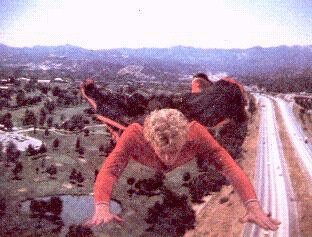
A press release issued in 2000 suggested a departure from the show’s original concept…noting that the new recipient of the suit would be a comic book fan who had often daydreamed of having super powers. A February 2004 report posted by Jim Littler at comicbookmovie.com, however, offered an more upbeat prognosis: “…unlike the route Starsky and Hutch has taken, American Hero will not be a spoof or parody. Instead, it will follow along the same comedic lines as the original show and stay true to it’s genre.”
Written By Commander Taggart
The Greatest American Hero trivia:
• The show’s catchy theme song, “Believe It Or Not,” made it to the top of the pop charts in August of 1981. The song was written by TV theme veterans Mike Post and Stephen Geyer, and was sung by Joey Scarbury.
• Series co-star Connie Sellecca was once married to Gil Gerard of Buck Rogers fame.
• Four original third-season episodes shot for ABC never aired on the network, and were never seen until the show went into syndication.
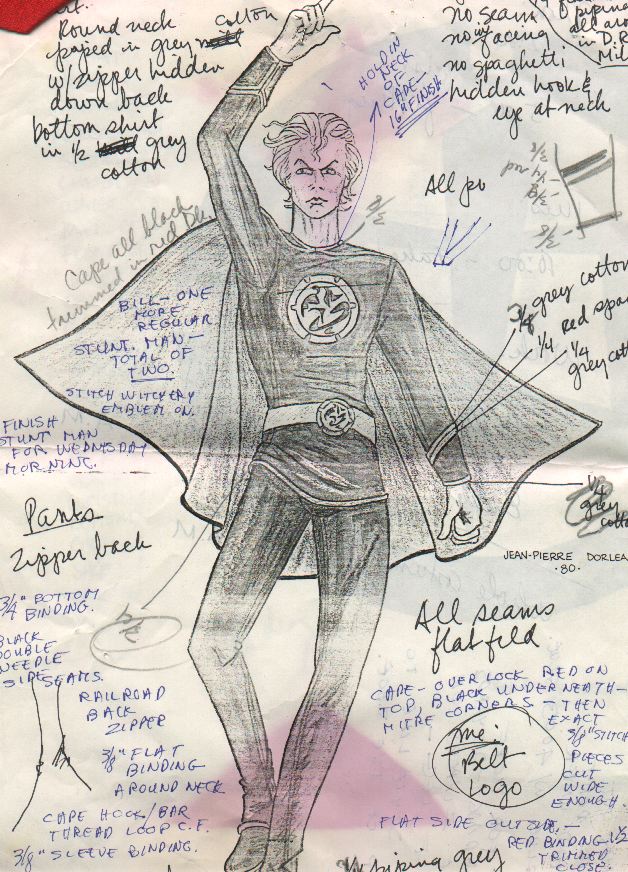
Jean-Pierre Dorleac’s Original Conception of the GAH Supersuit